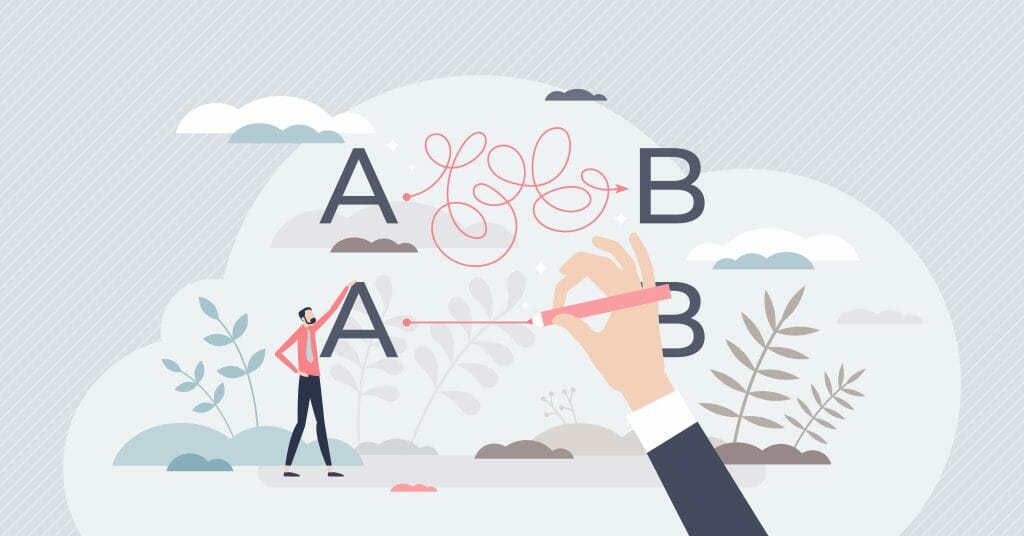“Simplicity is the ultimate sophistication,” said Leonardo da Vinci in the fifteenth century.
In his book ‘Subtract: The Untapped Science of Less’, a professor of engineering Leidy Klotz shares insightful research on how human minds tend to add before taking away, and how it holds progress back.
In our personal and business lives this habit leads to endless ‘to-do’ lists, conflicting priorities, and extreme fragmentation.
According to Leidy Klotz, subtraction is the act of getting to less, but it is not the same as doing less.
In fact, getting to less often means thinking more.
In the new Hidden Brain podcast episode Leidy Klotz discusses compelling arguments for getting to less.
Subtracting is physiologically hard and painful.
How to start subtracting?
– Did you notice that most ideas generated during brainstorming sessions tend to focus on expansion or new projects?
💡 Instead, in your next team brainstorming, make sure to generate ideas to streamline existing projects or stop doing things that are not working anymore.
– Call fewer meetings or invite fewer people to those meetings.
– Simplify communication and pick an appropriate communication channel and audience for your message (don’t cc the entire team).
– Free up your schedule by not attending meetings where we add little value.
What Is the Subtraction Habit?
In most cases, people try to solve problems in a very specific way. Adding something in is typically the chosen solution. It’s far less common to remove something to solve a problem. However, maybe that isn’t the way it should be.
All sorts of people make a to-do list but almost nobody makes a to-not list. However, both of these can be useful. Additive transformations are a great way to do things to get the outcome you want. Subtractive transformations are things you stop doing to get the desired outcome.
Of course, the subtraction habit isn’t something that comes naturally. It takes time to make this a habit that you can use in the workplace. However, the basic idea is to accomplish more by doing less. Subtraction is an act of getting to less but it doesn’t mean doing less, Most of the time, getting to less requires more thinking.
Leidy Klotz offers many arguments about getting to less in a Hidden Brain podcast episode. However, the process can be painful and physiologically challenging. That’s why it’s best to start small and slowly ramp up the subtraction habit. You can get used to it as it starts to feel more comfortable.
For instance, when you have brainstorming sessions, have you noticed the ideas tend to revolve around new or expanded projects? Step in during the next meeting and talk about ways to streamline projects or stop doing things that no longer work. In addition, you can cut down on meetings or have fewer people present at them.
Other ways to subtract relate to simplifying your communication habits. Make sure you select the right communication channel and think about the audience for the message. Don’t add on everyone on the team if they aren’t needed. Subtract instead of adding.
How to Create and Master the Subtraction Habit
First, you should make a list. Take down all the things that are bringing your team down or hindering progress. Then see how you can put the subtraction habit into place. Removing things is a great way to streamline and simplify the workplace.
The Teamraderie Team Refresh experience with Dr. Kathryn Segovia from Stanford University can help you make these changes. Dr. Segovia can help your team get rid of whatever is taking up all their energy. You can learn to do more with the things that offer the most to the team and company.
As you go through the experience, Dr. Segovia will help track your team’s progress. You’ll help build an interactive artifact throughout the experience and master the subtraction habit and all the benefits it offers.
Help your team subtract
The best way forward often involves removing, streamlining and simplifying things.
Teamraderie “Team Refresh” experience with Stanford University’s Dr. Kathryn Segovia can help your team:

Studies show that the best teams do a “team refresh” every couple months.
Teams need to have explicit conversations about: What do we need to do more of? What do we need to get rid of?
In “The Subtraction Game”, Dr. Segovia will help your team rid the thing that depletes energy. And in “The Strengths Game”, you will learn to double-down on what yields best results.
Dr. Segovia will track your team’s progress with an interactive artifact that you’ll build throughout the experience.


